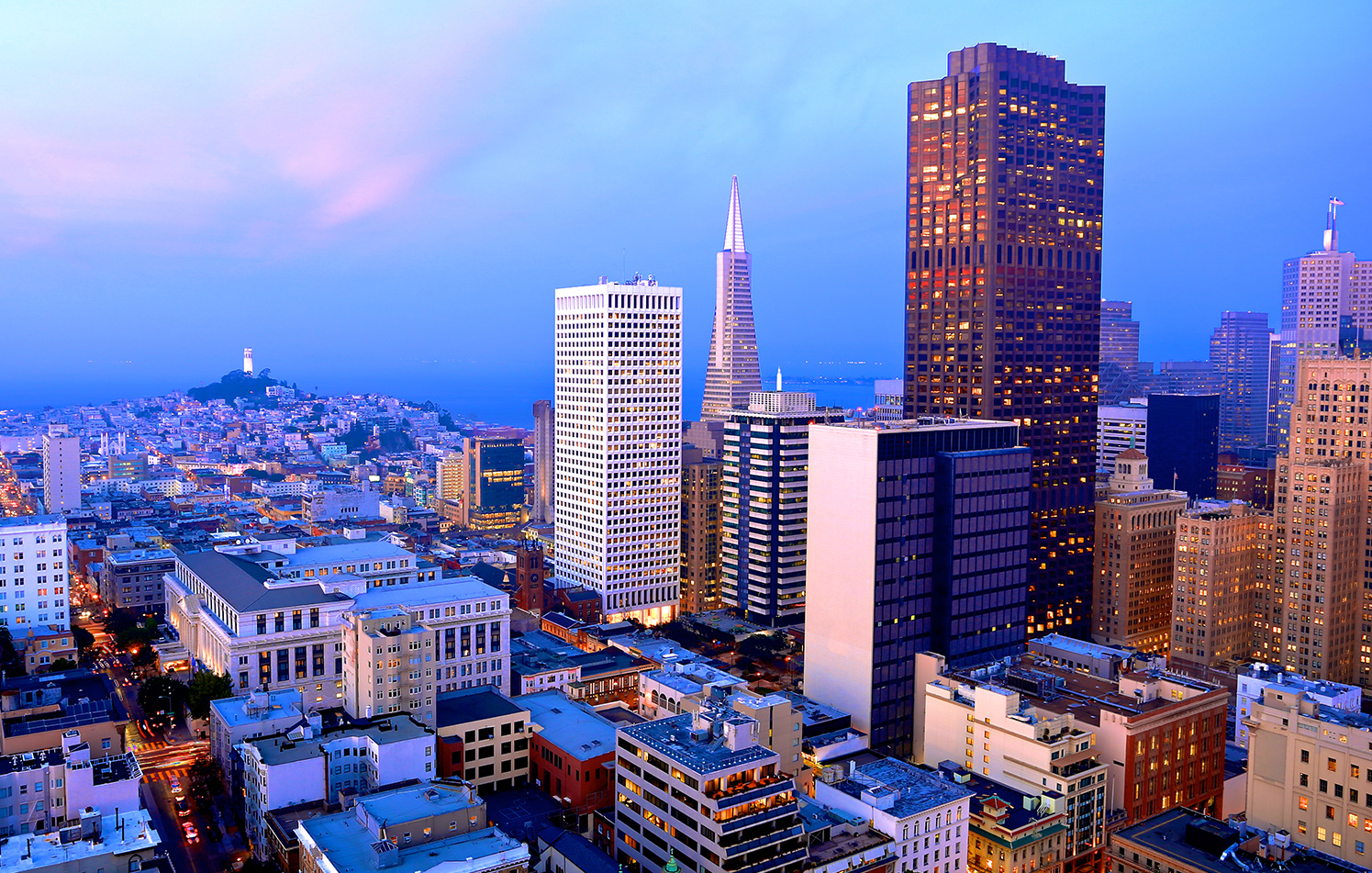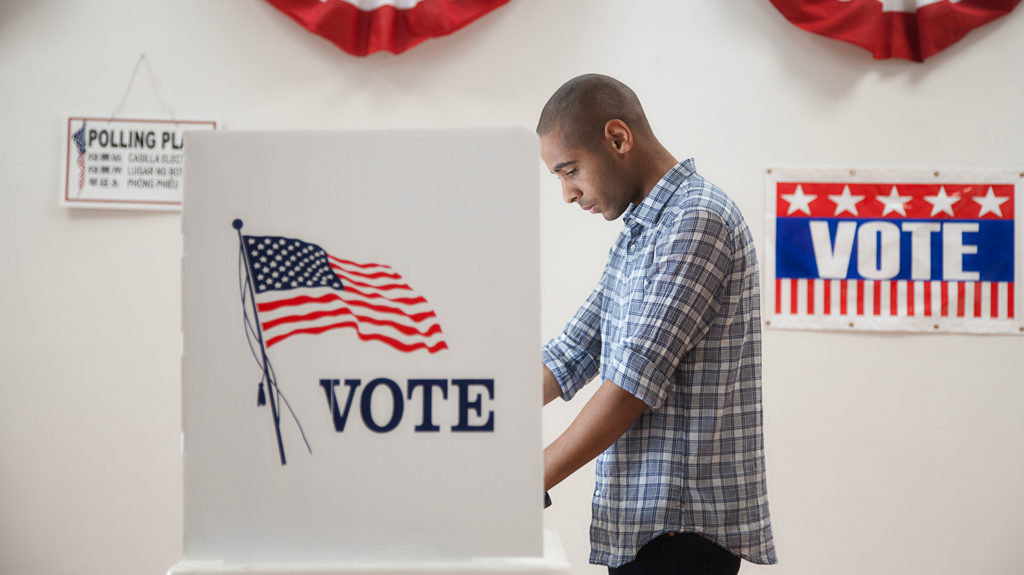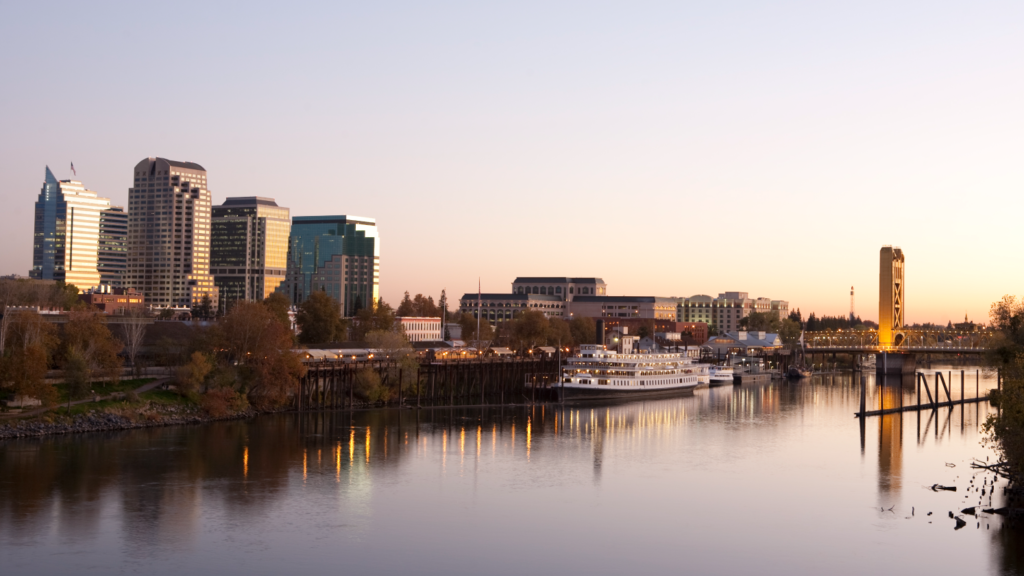Look at measures of economic confidence and you’d think partisanship has caused us all to lose our minds. Even though the labor market continues to improve under Trump at a similar pace to under Obama, benefiting both red and blue America, it’s as if Republicans and Democrats live in parallel universes. Just after the 2016 election, Republican confidence jumped while Democratic confidence dipped — the opposite of what they did after the 2008 election. Our own recent research showed that Republicans and Democrats are sharply split in their views of the national economy and on what labor market policies are needed.
But, take heart. Ask people about conditions closer to home, and reality still matters. Looking at how people rate the economies where they’re located allows us to compare perceptions across places where conditions vary. This demonstrates that economic conditions still influence how people see the economy. Lower unemployment, faster job growth, and a more educated workforce are all correlated with local economic confidence.
Partisanship plays only a supporting role in local economic confidence. In fact, there’s even a point of bipartisan agreement. Both Republicans and Democrats tend to rate economic conditions higher in blue metros than in red metros. In all, the metros that inspire the most economic confidence include smaller Mountain state metros like Boulder CO, Provo-Orem UT, and Boise City ID, as well as tech hubs like the San Francisco Bay Area, Austin, and Raleigh. Provo-Orem and Boise City were red in 2016, but eight of the 10 top metros inspiring confidence were bright shades of blue. It turns out that people are more optimistic about places that really are doing better economically.
The ingredients for local economic confidence
In September, we surveyed 2000 American adults on their politics and attitudes about the economy. Nine percent described economic conditions in their region as excellent and 51% said good—similar to the optimism about national economic conditions, which 10% called excellent and 47% called good. To understand why some people are more upbeat about their local economy than others, we combined respondents’ answers with data on their local job markets. We found five factors that independently drive local economic confidence:
- View of your personal financial situation. Some 81% of respondents who rated their personal financial situation as excellent or good said the same about local economic conditions. That compared with 40% who said their personal financial situation was only fair or poor.
- View of national economic conditions. Among respondents who rated the national economic situation as excellent or good, 83% said the same about their local economic conditions. That compared with just 30% of respondents who said the national economic situation was only fair or poor. In turn, people’s views of the national economic situation are strongly influenced by politics, with 73% of Republicans, but only 43% of Democrats, rating national economic conditions excellent or good.
- The local unemployment rate. A lower unemployment rate means more opportunities and bargaining power for workers, and should translate into faster wage growth. People are more upbeat where the unemployment rate is lower.
- Local job growth. Higher job growth rates mean expanding opportunities as well as rising home prices, which the home-owning majority likes. People are more upbeat where job growth is faster.
- Local educational attainment. This one might be less obvious. The share of adults with a college degree is highly correlated with earnings — and therefore spending power. Education is also closely related to the local job mix. Places with more highly educated populations have fewer jobs in occupations at risk from automation and more jobs in occupations projected to grow faster.
Some local factors didn’t affect confidence. The cost of living had no effect on how people rated local economic conditions, even though high costs can keep people from moving to places offering economic opportunity. Also, local income inequality had no effect on local economic confidence — even though some of America’s richest places are also the most unequal.
The metros that inspire confidence
With a survey of 2000 people nationally, we didn’t have enough respondents to report local economic confidence for individual metros. What we did instead was to see which metros ranked highest on the combination of the three local economic measures associated with favorable views of local conditions. Four of the top five metros were in the Mountain West: Boulder and Fort Collins, CO; Provo-Orem, UT; and Boise, ID. Several have major universities, and several are tech hubs. Only one of the top ten — Ann Arbor, MI — is outside the South or West.
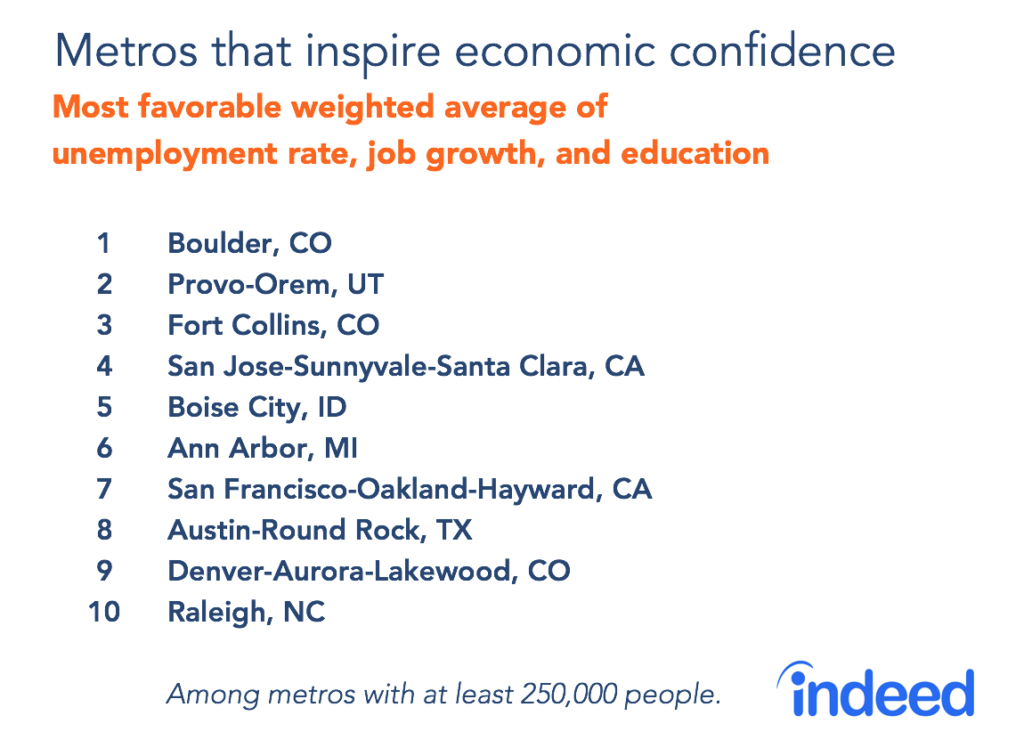
The 10 metros that scored best on the factors associated with confidence have something else in common besides geography. All except Provo-Orem and Boise City voted for Clinton over Trump in 2016. So what is it about blue metros that inspires economic confidence? On two of the three labor-force measures—unemployment and job growth—blue and red metros look pretty similar on average. But there’s a big gap in educational attainment. The share of adults with bachelor’s degrees is 35% in blue metros and 26% in red metros on average. Thus, blue metros are at lower risk of job loss from automation than red metros and have jobs in occupations projected to grow faster.
The surprising bipartisanship of local economic confidence
Because Republicans are more upbeat than Democrats about national economic conditions and people feel similarly about local conditions as they do nationally, Republicans are more enthusiastic about their local markets too. Beyond that though, partisanship in local economic confidence is muted.
For instance, both Democrats and Republicans rate blue metros higher than red metros, reflecting more favorable economic conditions in blue metros. Furthermore, after accounting for the unemployment rate, job growth, and education levels, people show no bias in favor of metros where local prevailing politics reflect their personal views. In other words, a metro’s prevailing politics has no effect on local economic confidence — either for Democrats or Republicans.
Since there’s no reduction in confidence for being in the local political minority, the people with the most positive view of local economic conditions were Republicans in blue metros — 77% of them said their region was excellent or good. This reflects the higher confidence Republicans have in the economy nationally combined with the more favorable economic conditions in blue metros.
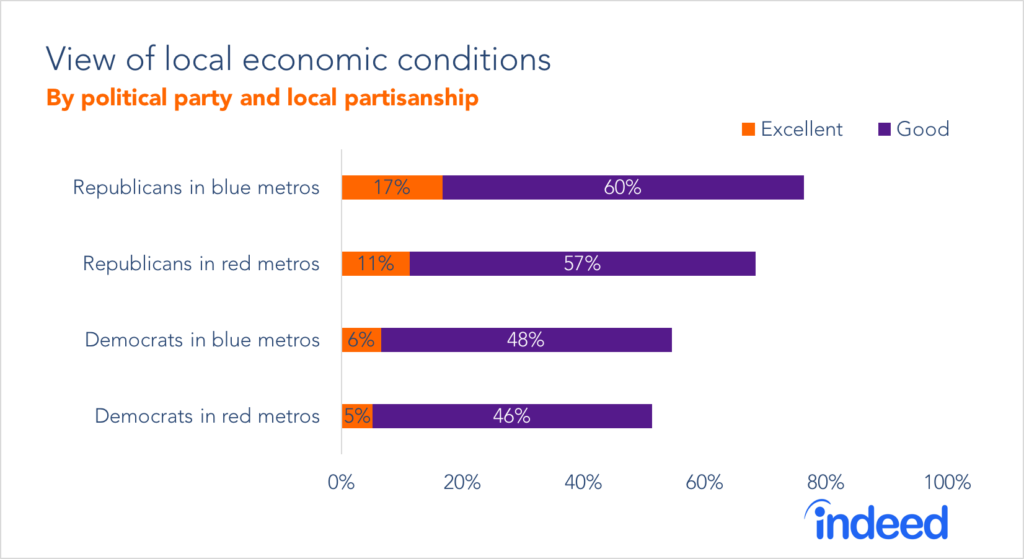
Furthermore, partisan views about the economy are fleeting — they tend to flip depending on which party has the presidency. But the favorable economic conditions in blue metros — particularly high education levels, income, and job mix — are more enduring and, if anything, strengthening. Voting for Democrats is increasingly correlated with local education level, and the gap between richer and poorer places is widening. In the high-profile beauty contest to lure the high-paying jobs of Amazon’s second headquarters, 13 locations on the shortlist were in metros that voted for Clinton by a margin of 10 points, including winners metro New York and Washington. Only one — Nashville — voted for Trump by a similar margin. Republicans may be more enthusiastic about the national and local economies today, but the places where they live still face bigger long-term challenges.
Methodology
This blog post is based on an online survey of 2,000 US adults age 18+ conducted September 19-23, 2018, for Indeed by Decipher/FocusVision. Weights were applied in order to match respondent distributions across age, educational attainment, race/ethnicity, and sex with the 2018 Current Population Survey’s Annual Social and Economic Supplement.
Throughout this analysis, Democrats and Republicans include both people who identified with that political party, as well as independents and others who lean toward that party. Some questions follow the language used by the Pew Research Center. However, our results should not be compared with Pew Research Center results for trending purposes.
We combined survey responses with metropolitan-level economic and political data based on respondents’ self-reported ZIP code. Economic data are from the Bureau of Labor Statistics (unemployment rate, employment growth), the Census Bureau (educational attainment, income inequality), the Bureau of Economic Analysis (regional price indexes), the Federal Housing Finance Agency (home prices), and Dave Leip’s Atlas of U.S. Presidential Elections (2016 vote).
The survey asked about national economic conditions, regional economic conditions, and personal financial situation on a 4-point scale (excellent, good, only fair, poor). The correlation and regression results use this measure as a continuous variable.
The key analysis was an individual-level regression of respondents’ views of regional economic conditions on:
- local economic variables: unemployment rate, job growth, educational level, with income inequality and cost-of-living tested, but showing no impact
- controls: either demographics and political party or, alternatively, views of personal financial situation and national economic conditions.
With either set of controls, all three local economic variables — unemployment rate, job growth, and educational level — had statistically significant effects on views of local economic conditions in the full model with all respondents included. The coefficients on these three local economic variables were used as weights to combine the values for every metro into a summary score for the metro ranking.
The same regressions, run separately for Republicans and Democrats, and with the metro 2016 vote margin added, showed no statistically significant effect of metro 2016 vote margins on view of local economic conditions.
